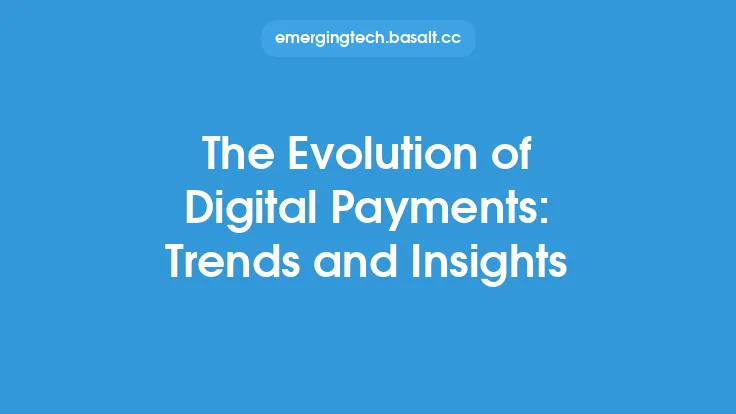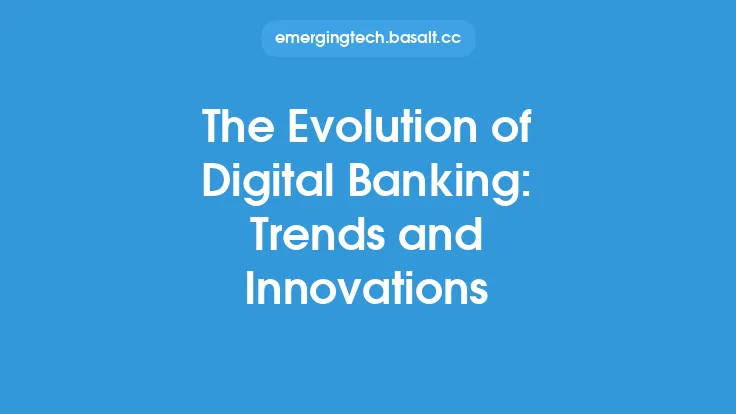The concept of blockchain has been around for several decades, with its roots dating back to the 1980s. However, it wasn't until the launch of Bitcoin in 2009 that the technology started to gain widespread attention. The history of blockchain is a fascinating story that involves the contributions of many individuals and groups, and its evolution has been shaped by a variety of factors, including technological advancements, economic conditions, and societal needs.
Early Beginnings: The Precursors to Blockchain
The idea of a decentralized, distributed ledger system was first proposed by computer scientist David Chaum in the 1980s. Chaum, who is often referred to as the "father of digital cash," developed a system called eCash, which allowed users to make anonymous transactions over the internet. Although eCash was not a blockchain in the classical sense, it laid the foundation for the development of later technologies. In the 1990s, other researchers, such as Stuart Haber and W. Scott Stornetta, began exploring the concept of a decentralized, timestamped ledger system. Their work focused on creating a secure and tamper-proof way to record transactions, which would later become a key feature of blockchain technology.
The Launch of Bitcoin and the Emergence of Blockchain
The launch of Bitcoin in 2009 marked a significant turning point in the history of blockchain. Bitcoin's underlying technology, which was described in a whitepaper by an individual or group of individuals using the pseudonym Satoshi Nakamoto, introduced the concept of a decentralized, peer-to-peer network that used a distributed ledger to record transactions. The Bitcoin blockchain was designed to be a public, open-source system that allowed anyone to participate and verify transactions, without the need for a central authority. The success of Bitcoin sparked a wave of interest in blockchain technology, and soon, other cryptocurrencies and blockchain-based projects began to emerge.
The Expansion of Blockchain Beyond Cryptocurrency
As the popularity of Bitcoin and other cryptocurrencies grew, so did the recognition of the potential applications of blockchain technology beyond digital currency. In 2014, the concept of "smart contracts" was introduced, which allowed for the automation of various processes and the creation of decentralized applications (dApps) on top of blockchain networks. This led to the development of platforms such as Ethereum, which was launched in 2015 and has since become one of the most widely used blockchain platforms. The expansion of blockchain beyond cryptocurrency has led to a wide range of applications, including supply chain management, voting systems, and identity verification.
The Development of New Blockchain Platforms and Technologies
In recent years, there has been a proliferation of new blockchain platforms and technologies, each with its own unique features and applications. Some of the notable developments include the launch of blockchain platforms such as Hyperledger, Corda, and Polkadot, which are designed for specific use cases such as enterprise adoption, supply chain management, and interoperability. Additionally, the development of new consensus algorithms, such as proof-of-stake (PoS) and delegated proof-of-stake (DPoS), has improved the scalability and energy efficiency of blockchain networks. The rise of decentralized finance (DeFi) and non-fungible tokens (NFTs) has also led to new and innovative applications of blockchain technology.
The Future of Blockchain: Trends and Predictions
As blockchain technology continues to evolve, there are several trends and predictions that are likely to shape its future. One of the key trends is the increasing adoption of blockchain by enterprises and governments, which is expected to drive the development of new use cases and applications. The growth of DeFi and NFTs is also expected to continue, with new and innovative applications emerging in areas such as lending, borrowing, and digital art. Additionally, the development of new technologies, such as quantum computing and artificial intelligence, is likely to have a significant impact on the future of blockchain, with potential applications in areas such as security and scalability. Overall, the future of blockchain is likely to be shaped by a combination of technological, economic, and societal factors, and its evolution will continue to be driven by the contributions of individuals and groups from around the world.
Conclusion and Final Thoughts
The history and evolution of blockchain is a complex and fascinating story that involves the contributions of many individuals and groups. From its early beginnings as a concept for a decentralized, distributed ledger system, to its current status as a widely recognized and adopted technology, blockchain has come a long way. As the technology continues to evolve, it is likely to have a significant impact on a wide range of industries and applications, from finance and supply chain management to voting systems and identity verification. Whether you are a developer, entrepreneur, or simply someone who is interested in the potential of blockchain, there has never been a more exciting time to be involved in this rapidly evolving field.





